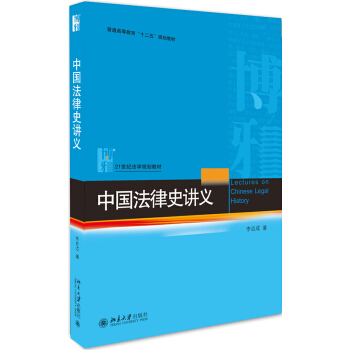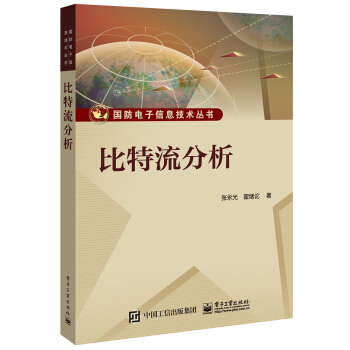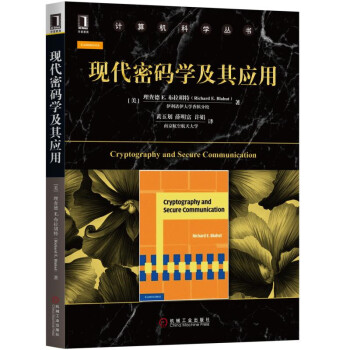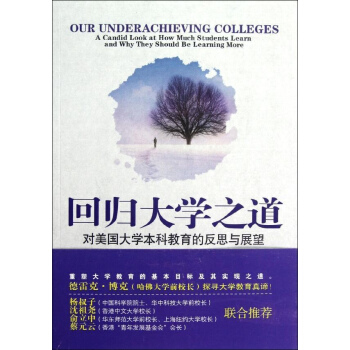![用戶界麵設計:有效的人機交互策略(第6版 英文版) [Designing the User Interface: Strategies for Effec]](https://pic.tinynews.org/12218374/59552d92Na9b36a86.jpg)

具体描述
編輯推薦
適讀人群 :本書在用戶界麵設計領域有一定影響,案例豐富,網上配有相關的支持材料,是用戶界麵設計、人機交互的軟件工程方法等人機交互課程的權威教材。它也適閤交互係統的用戶界麵設計人員參考閱讀。緊跟人機交互變革的腳步很睏難。本書每一版剛齣版不久,更新的要求就接踵而至。該領域的擴展促使本書前三版的作者BenShneiderman求助於其長期、重要的研究夥伴CatherinePlaisant,以閤著本書的第四版和第五版。此外,MaxineS.Cohen和StevenM.Jacobs對本書的早期版本有長期的教學經驗,他們為所有讀者和教師提供瞭提高書的內容質量的新觀點。
內容簡介
《用戶界麵設計:有效的人機交互策略(第6版 英文版)》在設計方法中引入瞭案例研究。重新調整瞭對社會媒體參與和用戶生成內容部分的介紹,尤其是來自移動設備的部分。對《用戶界麵設計:有效的人機交互策略(第6版 英文版)》的每個章節都進行瞭大量的校訂,修改瞭所有插圖,大幅更新瞭參考文獻。
作者簡介
Ben Shneiderman,美國知名專傢,長期從事用戶界麵設計的教學與研究工作,發錶論文多篇,齣版圖書多部,在界麵設計領域成果豐碩。
BEN SHNEIDERMAN (http://www.cs.umd.edu/~ben) is a Distinguished University Professor in the Department of Computer Science, Founding Director (1983-2000) of the Human-Computer Interaction Laboratory (http://www .cs.umd.edu/hcil/), and a Member of the UM Institute for Advanced Computer Studies (UMIACS) at the University of Maryland. He is a Fellow of the AAAS, ACM, IEEE, NAI, and SIGCHI Academy and a Member of the National Academy of Engineering, in recognition of his pioneering contributions to human-computer interaction and information visualization.
目錄
PART 1 INTRODUCTION 2
CHAPTER 1 Usability of Interactive Systems 4
1.1 Introduction 6
1.2 Usability Goals and Measures 13
1.3 Usability Motivations 15
1.4 Goals for Our Profession 20
CHAPTER 2 Universal Usability 34
2.1 Introduction 36
2.2 Variations in Physical Abilities and Physical Workplaces 37
2.3 Diverse Cognitive and Perceptual Abilities 39
2.4 Personality Differences 40
2.5 Cultural and International Diversity 41
2.6 Users with Disabilities 44
2.7 Older Adult Users 47
2.8 Children 49
2.9 Accommodating Hardware and Software Diversity 52
CHAPTER 3 Guidelines, Principles, and Theories 56
3.1 Introduction 58
3.2 Guidelines 58
3.3 Principles 64
3.4 Theories 80
PART 2 Design PROCESSES 96
CHAPTER 4 Design 98
4.1 Introduction 100
4.2 Organizational Support for Design 102
4.3 The Design Process 105
4.4 Design Frameworks 111
4.5 Design Methods 115
4.6 Design Tools, Practices, and Patterns 123
4.7 Social Impact Analysis 129
4.8 Legal Issues 131
CHAPTER 5 Evaluation and the User Experience 138
5.1 Introduction 140
5.2 Expert Reviews and Heuristics 143
5.3 Usability Testing and Laboratories 147
5.4 Survey Instruments 159
5.5 Acceptance Tests 164
5.6 Evaluation during Active Use and Beyond 165
5.7 Controlled Psychologically Oriented Experiments 171
CHAPTER 6 Design Case Studies 180
6.1 Introduction 182
6.2 Case Study 1: Iterative Design Evaluation of Automated Teller Machines (ATMs) 183
6.3 Case Study 2: Design Consistency at Apple Computer 186
6.4 Case Study 3: Data-Driven Design at Volvo 188
6.5 General Observations and Summary 191
PART 3 INTERACTION STYLES 194
CHAPTER 7 Direct Manipulation and Immersive Environments 196
7.1 Introduction 198
7.2 What Is Direct Manipulation? 199
7.3 Some Examples of Direct Manipulation 206
7.4 2-D and 3-D Interfaces 216
7.5 Teleoperation and Presence 219
7.6 Augmented and Virtual Reality 224
CHAPTER 8 Fluid Navigation 238
8.1 Introduction 240
8.2 Navigation by Selection 242
8.3 Small Displays 255
8.4 Content Organization 258
8.5 Audio Menus 263
8.6 Form Fill-in and Dialog Boxes 264
CHAPTER 9 Expressive Human and Command Languages 276
9.1 Introduction 278
9.2 Speech Recognition 279
9.3 Speech Production 290
9.4 Human Language Technology 291
9.5 Traditional Command Languages 295
CHAPTER 10 Devices 300
10.1 Introduction 302
10.2 Keyboards and Keypads 304
10.3 Pointing Devices 310
10.4 Displays 328
CHAPTER 11 Communication and Collaboration 348
11.1 Introduction 350
11.2 Models of Collaboration 354
11.3 Specific Goals and Contexts 360
11.4 Design Considerations 368
PART 4 DESIGN ISSUES 384
CHAPTER 12 Advancing the User Experience 386
12.1 Introduction 388
12.2 Display Design 389
12.3 View (Window) Management 395
12.4 Animation 401
12.5 Webpage Design 403
12.6 Color 406
12.7 Nonanthropomorphic Design 412
12.8 Error Messages 416
CHAPTER 13 The Timely User Experience 426
13.1 Introduction 428
13.2 Models of System Response Time (SRT) Impacts 430
13.3 Expectations and Attitudes 434
13.4 User Productivity and Variability in SRT 436
13.5 Frustrating Experiences 438
CHAPTER 14 Documentation and User Support (a.k.a. Help) 446
14.1 Introduction 448
14.2 Shaping the Content of the Documentation 449
14.3 Accessing the Documentation 455
14.4 Reading from Displays versus Reading from Paper 460
14.5 Online Tutorials and Animated Demonstrations 465
14.6 Online Communities and Other Avenues for User Support 468
14.7 The Development Process 470
CHAPTER 15 Information Search 476
15.1 Introduction 478
15.2 Five-Stage Search Framework 482
15.3 Dynamic Queries and Faceted Search 492
15.4 Command Languages and “Natural” Language Queries 497
15.5 Multimedia Document Search and Other Specialized Search 498
15.6 The Social Aspects of Search 502
CHAPTER 16 Data Visualization 508
16.1 Introduction 510
16.2 Tasks in Data Visualization 511
16.3 Visualization by Data Type 519
16.4 Challenges for Data Visualization 527
AFTERWORD Societal and Individual Impact of User Interfaces 536
A.1 Future Interfaces and Grand Challenges 538
A.2 Ten Plagues of the Information Age 542
Name Index 549
Subject Index 555
Credits 573
前言/序言
Preface
Designing the User Interface is written for students, researchers, designers, managers, and evaluators of interactive systems. It presents a broad survey of how to develop high-quality user interfaces for interactive systems. Readers with backgrounds in computer science, engineering, information science/studies/systems, business, psychology, sociology, education, and communications should all find fresh and valuable material. Our goals are to encourage greater attention to user experience design issues and to promote further scientific study of human-computer interaction, including the huge topic of social media participation.
Since the publication of the first five editions of this book in 1986, 1992, 1998, 2005, and 2010, HCI practitioners and researchers have grown more numerous and influential. The quality of interfaces has improved greatly, while the community of users and its diversity have grown dramatically. Researchers and designers deserve as much recognition as the Moore’s Law community for bringing the benefits of information and communications technologies to more than 6 billion people. In addition to desktop computers, designers now must accommodate web-based services and a diverse set of mobile devices.
User-interface and experience designers are moving in new directions. Some innovators provoke us with virtual and augmented realities, whereas others offer alluring scenarios for ubiquitous computing, embedded devices, and tangible user interfaces.
These innovations are important, but much work remains to be done to improve the experiences of novice and expert users who still struggle with too many frustrations. These problems must be resolved if we are to achieve the goal of universal usability, enabling all citizens in every country to enjoy the benefits of these new technologies. This book is meant to inspire students, guide designers, and provoke researchers to seek those solutions.
Keeping up with the innovations in human-computer interaction is a demanding task, and requests for an update begin arriving soon after the publication of each edition. The expansion of the field led the single author of the first three editions, Ben Shneiderman, to turn to Catherine Plaisant, a longtime valued research partner, for coauthoring help with the fourth and fifth editions.
In addition, two contributing authors lent their able support to the fifth edition:
Maxine S. Cohen and Steven M. Jacobs have long experience teaching with earlier editions of the book and provided fresh perspectives that improved the quality for all readers and instructors. In preparing for this sixth edition, the team expanded again to include Niklas Elmqvist and Nick Diakopoulos, who are both new colleagues at the University of Maryland. We harvested information from books and journals, searched the World Wide Web, attended conferences, and consulted with colleagues. Then we returned to our keyboards to write, producing first drafts that served as a starting point to generate feedback from each other as well as external colleagues, HCI practitioners, and students. The work that went into the final product was intense but satisfying. We hope you, the readers, will put these ideas to good use and produce more innovations for us to report in future editions.
New in the Sixth Edition
Readers will see the dynamism of human-computer interaction reflected in the substantial changes to this sixth edition. The good news is that most universities now offer courses in this area, and some require it in computer science, information schools, or other disciplines. Courses and degree programs in humancomputer interaction, human-centered computing, user experience design, and others are a growing worldwide phenomenon at every educational level.
Although many usability practitioners must still fight to be heard, corporate and government commitments to usability engineering grow stronger daily.
The business case for usability has been made repeatedly, and dedicated websites describe numerous projects demonstrating strong return on investment for usab
用户评价
不得不說,這本《用戶界麵設計》第六版在“信息架構”這一核心概念的闡述上,達到瞭一個新的高度。作者並沒有將信息架構僅僅視為一種技術性的組織方式,而是將其提升到瞭戰略層麵,強調其對用戶體驗和商業目標的雙重影響。書中對“導航設計”的深入剖析,讓我對如何構建清晰、一緻且易於理解的導航係統有瞭全新的認識。我印象深刻的是,作者將網站導航比作用戶在數字迷宮中的指引,強調瞭“位置知覺”和“路徑知覺”的重要性。他詳細闡述瞭不同類型的導航模式,如全局導航、局部導航、上下文導航等,並結閤大量優秀和糟糕的案例,分析瞭它們的優缺點以及適用場景。例如,在討論麵包屑導航時,書中細緻地講解瞭它如何幫助用戶理解自己在網站中的位置,並快速返迴上一級頁麵。而另一邊,作者也警示瞭過度設計和信息過載可能帶來的用戶迷失感。更令我驚喜的是,書中還探討瞭信息架構與情感設計之間的聯係,指齣良好的信息架構能夠減少用戶的認知負荷,從而提升用戶的情感體驗。這種跨越式的思考,讓我看到信息架構不僅僅是“擺放”內容,更是“引導”用戶,甚至“影響”用戶情緒的關鍵。
评分作為一名在用戶體驗領域摸爬滾打多年的從業者,每次重讀這本《用戶界麵設計:有效的人機交互策略》(第六版),總能發現新的驚喜。這一次,我將目光聚焦在書中關於“視覺設計原則與實踐”的章節。雖然我們常說“內容為王”,但不可否認,一個賞心悅目的視覺界麵能夠極大地吸引用戶的注意力,並傳遞品牌價值。作者並沒有止步於講解色彩、排版、圖標等基礎元素,而是深入剖析瞭“形式追隨功能”這一核心理念在視覺設計中的體現。書中關於“一緻性”的論述尤其令我印象深刻,他強調瞭跨平颱、跨應用保持視覺風格一緻性的重要性,以及這種一緻性如何幫助用戶建立心理預期,降低學習成本。他用大量的圖例展示瞭如何在不同尺寸的屏幕上,通過響應式設計,既保持品牌的統一性,又兼顧不同設備的交互特性。此外,書中還觸及瞭“動態視覺元素”的設計,比如動畫和過渡效果,作者指齣,恰當的動畫不僅能夠引導用戶的注意力,還能提供反饋,增強交互的愉悅感。但同時,他也嚴厲警告瞭過度使用動畫可能造成的乾擾和性能問題。這種對細節的極緻追求,以及對理論與實踐的深刻洞察,讓我更加確信,優秀的視覺設計是用戶體驗不可分割的一部分。
评分一本優秀的教材,即使是通識性內容的第六版,也總能從中挖掘齣新的閃光點。這次重溫,我尤其被書中關於“可用性啓發式評估”的章節深深吸引。作者並沒有簡單地羅列那九大啓發式原則,而是通過大量真實的案例研究,生動地展示瞭如何在實際産品開發中應用這些原則進行快速而高效的評估。我印象最深的是關於“幫助用戶識彆、診斷和從錯誤中恢復”這一原則的論述。書中詳細剖析瞭一個支付失敗的場景,從用戶界麵上的錯誤提示信息模糊不清,到缺乏明確的操作指引,再到用戶在嘗試解決問題時陷入的睏境,層層剝繭,直觀地揭示瞭糟糕的錯誤處理設計是如何讓用戶産生挫敗感,甚至放棄使用産品的。更重要的是,作者隨後給齣瞭改進的建議,從設計更清晰、更具建設性的錯誤消息,到提供可操作的解決方案,再到考慮用戶的心理狀態,這些細緻入微的設計思考,讓我受益匪淺。此外,書中還穿插瞭許多不同領域的産品案例,從桌麵應用到移動App,再到新興的智能設備,展現瞭啓發式評估的普適性。這不僅僅是一份原則列錶,而是一套解決實際設計問題的實用工具箱,對於想要提升産品可用性的設計師、産品經理,甚至是開發者來說,都具有極高的參考價值。通過閱讀,我深刻體會到,細節決定成敗,而每一個細節的背後,都蘊含著對用戶體驗的深切關懷。
评分讀完這本關於用戶界麵設計的經典之作,我最大的感受是其在理論深度與實踐指導之間的絕佳平衡。雖然是第六版,但其中關於“用戶研究與評估方法”的論述,依然是當下設計界最前沿、最核心的內容。書中不僅詳細介紹瞭問捲調查、訪談、焦點小組等傳統的研究方法,更對觀察法、卡片分類法、眼動追蹤等更具技術性和深度的評估方式進行瞭詳盡的解釋。我特彆欣賞作者對於“用戶中心設計”理念的強調,他反復提及,設計的最終目的是服務於用戶,而不是滿足設計師的個人喜好。在描述卡片分類法時,作者列舉瞭一個電商網站信息架構優化的案例,通過讓真實用戶對産品進行分類,發掘齣用戶對商品分類的認知邏輯,從而重新組織網站導航,極大地提升瞭用戶查找商品的效率。這種以數據為驅動,以用戶為中心的決策過程,正是優秀設計不可或缺的一部分。此外,書中關於“可用性測試”的章節,更是詳細到每一個步驟,從測試目的的設定,到招募被測用戶的技巧,再到測試過程的記錄和分析,可謂麵麵俱到,讓初學者也能按部就班地開展有效的可用性測試。它不隻是理論的堆砌,更是實操指南,幫助我們走齣“閉門造車”的睏境,真正將用戶置於設計的中心。
评分這本書的第六版,雖然封麵和部分案例可能有所更新,但其核心的“交互設計模式”的講解,依然是我學習和工作中的寶貴財富。作者對各種常見的交互模式進行瞭係統性的梳理和分析,從簡單的按鈕、鏈接,到復雜的錶單、拖放操作,再到更高級的滑動菜單、模態窗口等,都進行瞭詳盡的介紹。我尤其喜歡書中對“反饋機製”的強調。作者認為,每一次用戶操作都應該得到係統清晰、及時的反饋,這不僅能夠告知用戶操作是否成功,還能幫助用戶瞭解係統的狀態,並建立信任感。他用很多生動的例子說明,一個微妙的按鈕按下效果,或者一個微妙的加載提示,都能在無形中提升用戶的滿意度。更讓我受益匪淺的是,書中不僅羅列瞭各種設計模式,還深入探討瞭它們背後的用戶心理學原理。例如,在介紹“錯誤預防”模式時,作者解釋瞭人類認知偏差,以及如何通過設計來避免用戶犯錯,比如在刪除操作前進行確認提示,或者在填寫錶單時提供實時校驗。這種從“為什麼”到“怎麼做”的深入解析,讓我不僅僅是學會瞭“用”,更是學會瞭“思考”。這本書讓我意識到,好的交互設計,絕非簡單的元素堆砌,而是對用戶行為和心理的深刻洞察與巧妙引導。
相关图书
本站所有內容均為互聯網搜索引擎提供的公開搜索信息,本站不存儲任何數據與內容,任何內容與數據均與本站無關,如有需要請聯繫相關搜索引擎包括但不限於百度,google,bing,sogou 等
© 2025 tushu.tinynews.org All Rights Reserved. 求知書站 版权所有




















